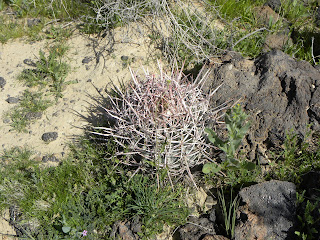Public Workshops for Ridgecrest Solar Power Project
According to the California Energy Commission (CEC), there will be four public workshops held to discuss the proposed Ridgecrest Solar Power Project. The workshops will give members of the public an opportunity to discuss or learn more about the recently published staff assessment and environmental impact statement for the project. The first pair of workshops in April will address water, soil, visual, air, land use, and traffic issues. The second pair of workshops in May will address biological resources. You can read more about the staff assessment and EIS on a previous post on this blog. The workshops will be held on 22 April AND 23 April, and on 3 May and 4 May (biological issues) at the Ridgecrest City Hall at 8AM on each day. You can also call into the workshop if you cannot attend in person. The following information is from the CEC e-mail notice: *Who*: The staff of the California Energy Commission and the Bureau of La...



